Everything You Should Know About Virgin Hair, Remy Hair and 100% Human Hair
We’re seeing a lot of confusion about labels like Virgin Hair, Remy Hair, and 100% Human Hair. In addition, suppliers have different definitions and interpretations for various purposes, making it more challenging to get quality hair at the right price. In this post, I will explain everything about Virgin Hair, Remy Hair, and 100% Human Hair as clearly as possible.
Table of Contents
The definitions of Virgin Hair, Remy Hair, and 100% Human Hair
1. What is Virgin Hair
Virgin hair is cut directly from a donor’s head with the hair cuticles all aligned and left in their most natural state. It has not been chemically treated or colored. As a result, it is very durable and can be bleached, dyed, and chemically altered without damage when done professionally. Consequently, virgin hair is the highest quality hair we know of and the most popular with stylists.
For the convenience of product management, we put all hair products whose raw materials are Virgin Hair in the Virgin Hair categories, such as 613 color hair made with virgin hair bleached.
2. What is Remy Hair
Remy Hair is human hair with the cuticle in one direction, but it can be hair that was dyed or treated. From this definition, you can see that Remy Hair includes Virgin Hair. However, in the market, the suppliers will not claim their Virgin Hair as Remy Hair because the price of virgin hair is usually higher.
Many years ago, Remy Hair was hair cut directly from donors like virgin hair. The only difference was that Remy Hair included chemically treated, bleached, or dyed hair. But since people have invented a technology that can turn Non-Remy Hair into Remy Hair, most Remy Hair on the market is not directly cut from donors.
3. What is 100% Human Hair
100% human hair is any hair from a human scalp — meaning it can come from the floor of hair salons, brushes, drains, and hair naturally falling out. Although it also includes Remy Hair and Virgin Hair by definition, all products on the market that are only labeled 100% human hair will not be Remy Hair or Virgin Hair.
Where is the human hair material from?
To explain the various hair types, we need to understand how to obtain the raw materials for human hair. Some will say that Brazilian hair is from Brazil, Indian hair is from India, and so on. But classifying hair types by country is unscientific, and I want to discuss something other than this issue. An essential factor in determining hair quality is how it is collected.
There are three ways to get human hair material:
1. Cut directly from the donors by professional hair buyers
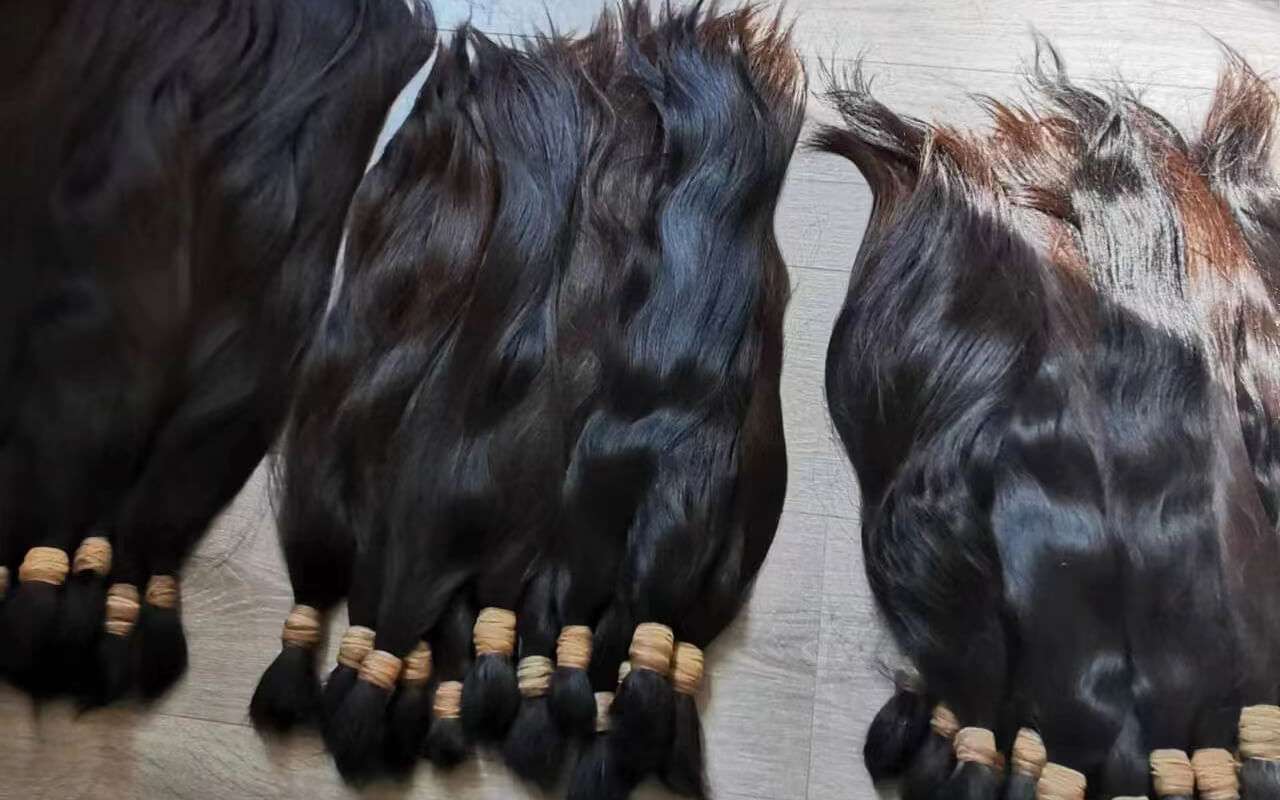
As we all know, the best hair materials have not been treated in any way, such as perming, dyeing, etc. However, with improved living standards, women in cities get their hair permed and dyed more frequently, making it challenging to collect high-quality hair in cities. But in the remote countryside, because of the living habits and customs, women still lead a relatively simple life, and their hair retains its original state. Therefore, professional hair buyers often go to the countryside with scissors and ride motorcycles to cut the hair of rural women. As a result, they get high-quality hair from the village women, and the rural women can get some money to supplement the family.
This is the primary source of raw materials for our virgin hair. The following video shows how the hair buyer cut hair from the donor.
2. From the hair salons
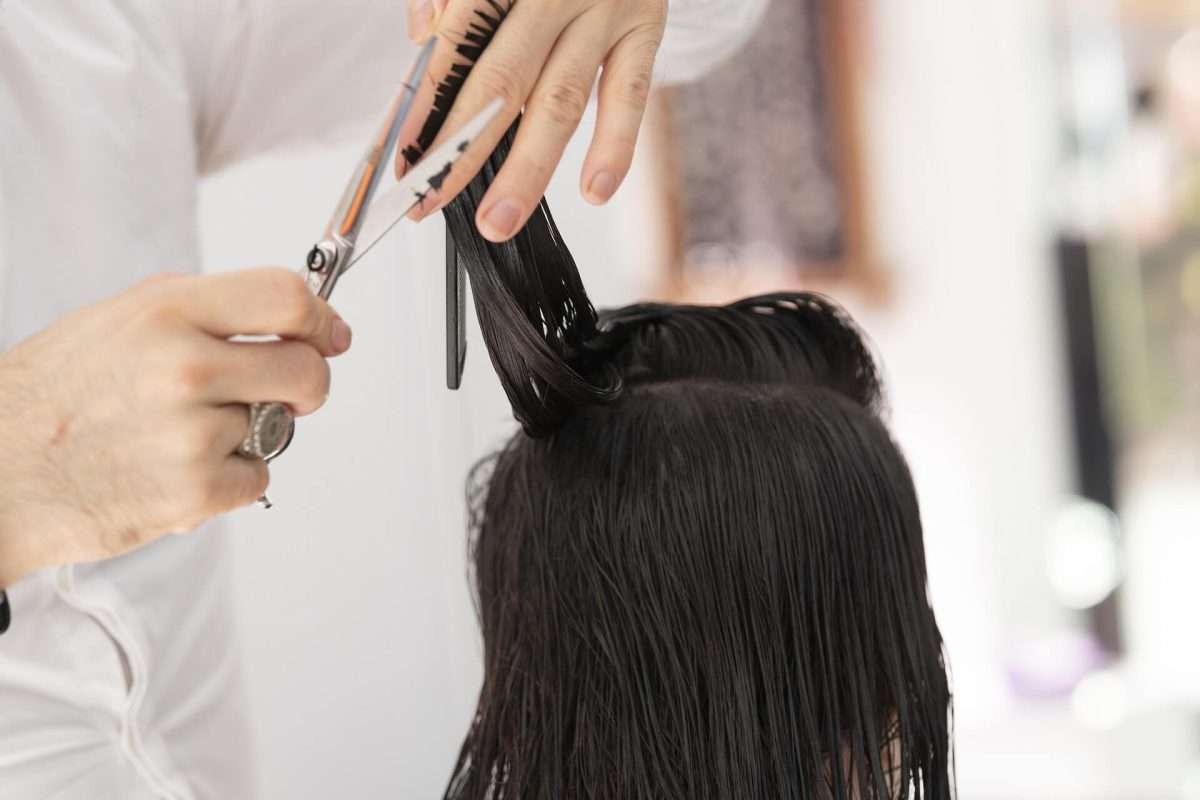
In the salon, hairdressers cut their clients’ hair daily, so they have a lot of hair to sell. But hairdressers make most of their money from their craft and service, not from hair of sale. Their primary task is to satisfy customers. Therefore, they only patiently collect excellent and long hair and let other hairs fall to the ground. The hair that falls to the ground cannot keep the cuticles in the same direction, so there is no way to use it as the raw material of our virgin hair.
Therefore, raw materials provided by hair salons take up only a tiny proportion of raw materials in our virgin hair, perhaps less than 5%. And since many women in the city have dyed their hair, a lot of the hair from the salon is not in natural color. Therefore, even if the hairdressers keep the cuticles in the same direction, this hair type cannot be Virgin Hair, but some are still suitable and nice materials for colored hair products.
3. From the hair pickers
Although human hair is a renewable resource, it grows slowly, and the average rate of hair growth is only about 1/2 inch per month or 6 inches per year. So, if you have cut hair from a donor, it will take a few more years of growth before you can cut it again. Therefore, hair cutting directly from the head is the simplest way, and the hair quality is the best, but its supply can not meet the growing market demand, and its price is getting higher and higher.
Many years ago, people found a way to obtain a large amount of human hair material to overcome the shortage and high cost of Virgin Hair materials. That is collecting the hair that people naturally lose every day.
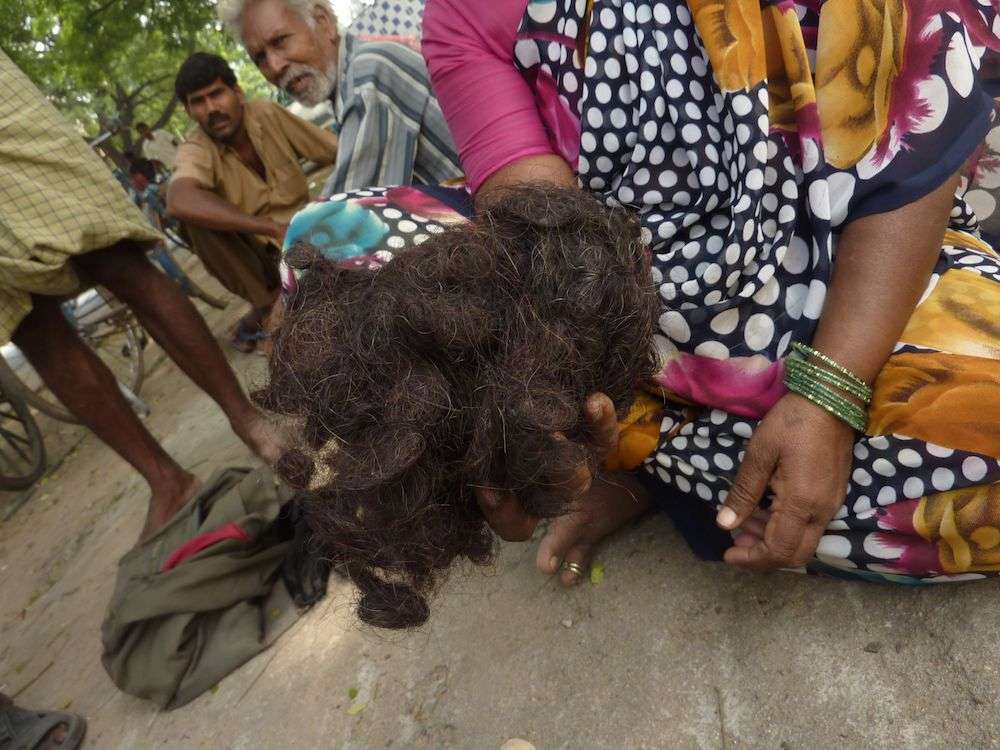
picture from sapiens
When we comb our hair daily, some fall naturally, and many people throw them in the trash can without thinking. But in some developing countries and regions, especially in Asian countries such as India, Pakistan, Bangladesh, Myanmar, etc., these hair are precious to hair pickers.
Women in low-income households gather and keep this hair to sell to hair collectors. They collect combed hair like a ball, and the hairball gets bigger every day. In addition, they would pick strands of hair from drains and waste mounds. Hair collectors regularly visit to buy these hairballs. This income is significant to these families and could help a woman buy cheap housewares, such as a plate or spoons, which she can trade later, and a day’s worth of milk and vegetables.
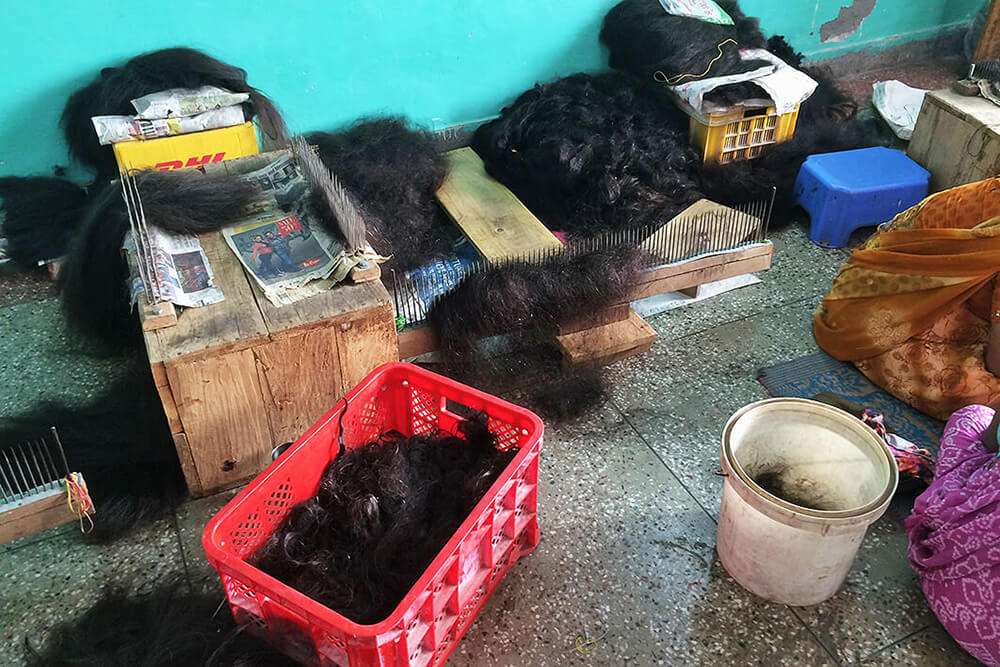
Once harvested, these hairballs travel to local processing factories, where workers wash them, untangle them and sort them into bundles of matching length and color. This hair we call combed hair bulks, then it is shipped to factories where it’s manufactured into wigs, hair weaves, clip-in hair, tap-ins hair, toupees, and other hair extensions.
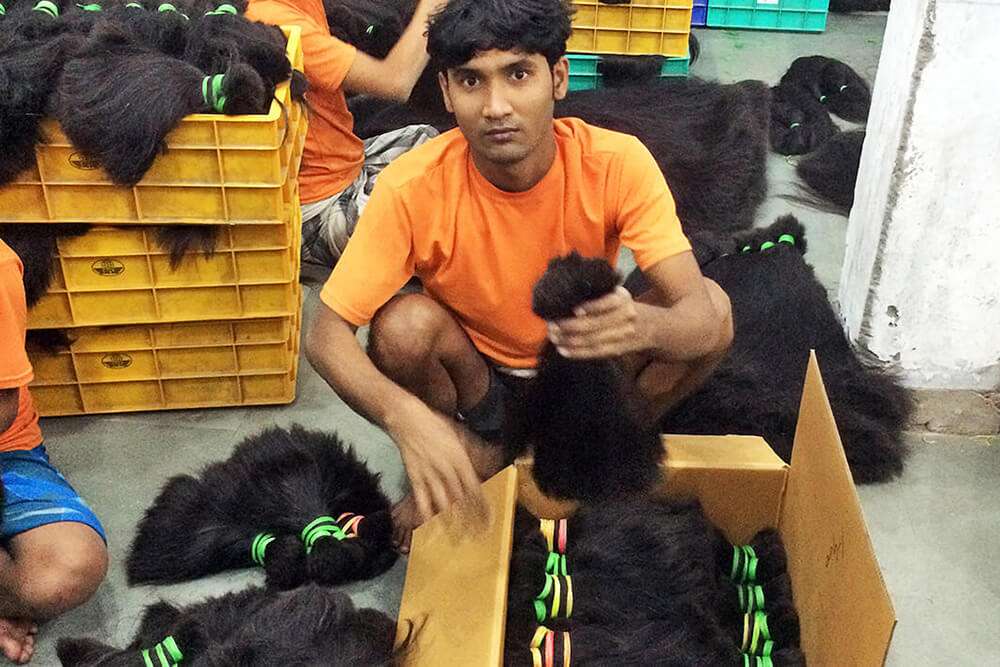
How factories process hair materials before they are used for production
1. Process hair which cut directly from donors
This type of hair is cut directly from the donors by professional buyers, the hair is clean, and all cuticles are kept in the same direction, so there is no need for complicated treatment. Instead, workers must sort the hair bulks by color, length, and texture.
Generally, when professional hair buyers cut the hair, they will preliminarily determine whether the donors have dyed them and divide them into two hair types. One is natural color hair bulk, which we call virgin hair bulk, while the other is dyed, which we call dyed hair bulk. But some hair bulks are hard to tell with the naked eye whether it is dyed or not, so we test natural hair color by scraping off bits with a razor blade.
1) Virgin hair bulk processing
Virgin hair bulk is the best hair material. It is healthy with intact cuticles, strong, and good luster; it doesn’t get frizzy when washed and bleaches to very light colors while remaining healthy. The most important indicator of virgin hair is its available bleach to pure color 613. All our virgin hair products are made from virgin hair bulk. To maintain the natural features, we only wash and style it during production, guaranteeing that our virgin hair products will last a long time and can be dyed any color you want.
Unfortunately, some suppliers can only guarantee that their virgin hair can be bleached to a color 27, which is not a feature of virgin hair. If the virgin hair you purchased is this type, you should consider whether you need to change your supplier.
2) Dyed hair bulk processing
Dyed hair bulk is also cut directly from donors as virgin hair bulk. The main difference is that the donor dyed her hair before cutting it. The quality of the dyed hair bulk varies greatly, some have been bleached many times, and the texture is seriously damaged. At the same time, some were dyed by a professional hair stylist, and the hair is still healthy, and the hair color is beautiful.
For dyed hair bulk with good color and texture, we will use it to produce high-grade light-colored hair products. For those hair bulks that have been deeply dyed or the texture has been destroyed, we will use them to make dark-colored products, which are not guaranteed to be dyed again.
2. Process hair from salons
The hair from the salon, which we have described earlier, has two types. One is the long hair of good quality, which the hairdressers patiently collect and keep in the same direction, while the short hair of low value goes straight to the floor.
For the former, there is no doubt that it is the same as the hair from professional hair buyers. Natural color hair bulks are virgin hair bulks, and other bulks are dyed hair bulks. They go through the same process as hair bulks collected from professional buyers.
For the hair that falls on the floor, the salon will sweep away the extra short hair as trash. For slightly longer ones, they collect them in bags and sell them cheaply to processing factories. Then, workers sort the hair into bulks of matching lengths at the processing factories. This process is the same as how they process combed hairballs.
And just like with combed hairballs, the cuticles of this type of hair can no longer stay in the same direction. So factories must treat it further before putting it into the hair production line. The next step is the same as combing hair bulks, except that the result is cleaner but mostly shorter. We will introduce this part in detail in the processing of combed hair bulks.
3. Process combed hair bulks from hair pickers
We have described how hair pickers collect hairballs in the previous paragraph. And how small processing factories turn hairballs into combed hair bulks. The weight of a hairball is so tiny that it takes many hairballs to fit into one hair bulk, so its strands come from an infinite number of people. Hair bulks collected and processed in these ways have the following characteristics:
1) Their color is not the purely natural color
Different people have different hair colors, and some hairballs come from people who have dyed their hair, which means you need to pick out the dyed hairballs before sorting them into hair bulks; otherwise, the hair bulks are not purely natural colors.
It is difficult and costly to pick out all the dyed hairballs, so most combed hair bulks contain dyed hair strands. However, this hair type does not guarantee to dye to a pure light color. Therefore, if factories use this material to produce light colors such as color 613, they manually remove the hair that failed in bleaching.
Notice: Some suppliers declare that their virgin hair is available for color 27# because it is not real virgin hair with pure natural color. In addition, color 27# is not very light, so it can cover up strands of hair that aren’t dyed well.
2) Their cuticles are unaligned
Since hairballs come from naturally shed hair, their cuticles are not kept in the same direction as virgin hair with aligned cuticles. So the combed hair bulk will tangle if we use it directly to produce hair weaves, wigs, and other hair products.
Combed hair bulk tends to get processed in 2 ways to prevent tangles.
- Method 1: Chemically strip the cuticles of the hair.
- Method 2: Use a machine to align the cuticles and then lightly chemically process them to become smoother.
Method 1 is cheaper than Method 2 and strips the entire cuticles from the hair. Unfortunately, this makes the hair easy to break and responds poorly to coloring/bleaching. The hair processed in Method 1 can be called 100% human hair in the human hair market. It is the lowest quality human hair type we don’t sell on our website.
Method 2 is more expensive, and current technology allows more than 97 percent of cuticles to be aligned. So instead of removing all cuticles like Method 1, it just needs chemical processing lightly, which is much less damaging than completely stripping the cuticle. This hair type will not break easily and generally responds better to bleaching/coloring. The overall quality of this type of hair is higher than that of Method 1.
The hair treated in Method 2 can be called Remy Hair; Mostly, the Remy Hair on the market is now this kind of hair. Even many suppliers sell this hair as virgin hair or incorporate it into virgin hair to reduce costs. As a result, their price is much lower than real virgin hair, thus attracting part of the uninformed clients to buy. Then, of course, some hair dealers clearly understand that but also purchase this type of hair and sell it to their customers as virgin hair to gain greater profits.
If you’re interested in how the non-Remy to Remy Converting machine aligning works, Vesta Hair College has a good video showing how the whole process:
As a human hair wholesaler with more than ten years of experience, we have won the applause of many customers through honest management. However, some clients turn to other suppliers because of their lower prices. Instead of adjusting the price in the price increase process, they turn to human hair products with lower prices and poorer quality to maintain their profits, which is very regrettable. The result is unfortunate; when their customers find that the quality of the product is entirely different, they loss their customers finally. This is an irreversible loss.
Through the introduction of this article, I aim to help our clients understand the difference between virgin hair, Remy hair, and 100% human hair in detail. To help you make the best choice and purchase the right human hair products for your customers. And you can explain in detail to your customers why there is such a big difference in price and tell them why virgin hair is a better purchase. If you have any further questions, please contact us via email or WhatsApp, and we will try to answer all your questions.
WhatsApp: +86180263222304
Email: sales@onlinehumanhair.com
